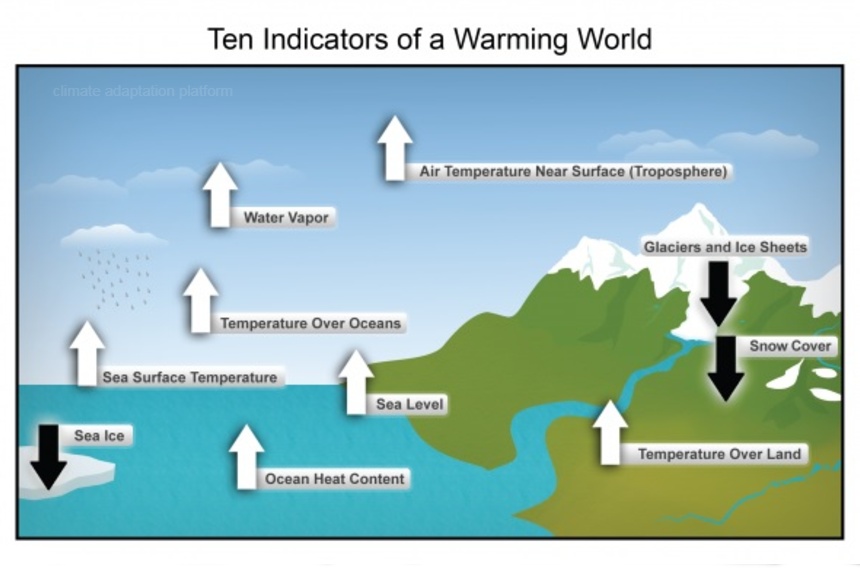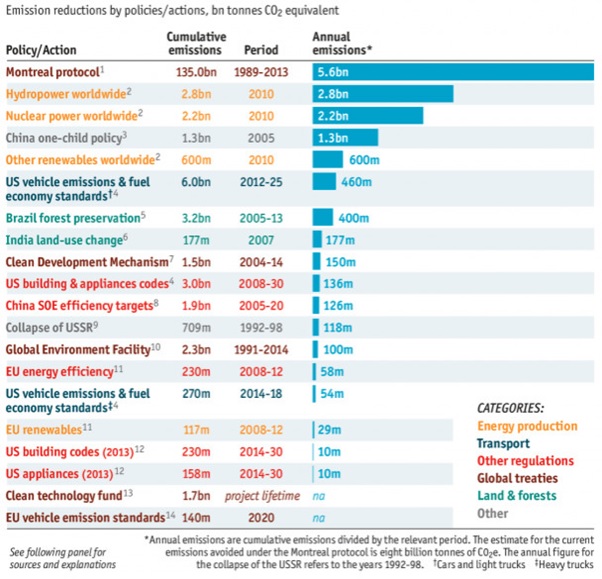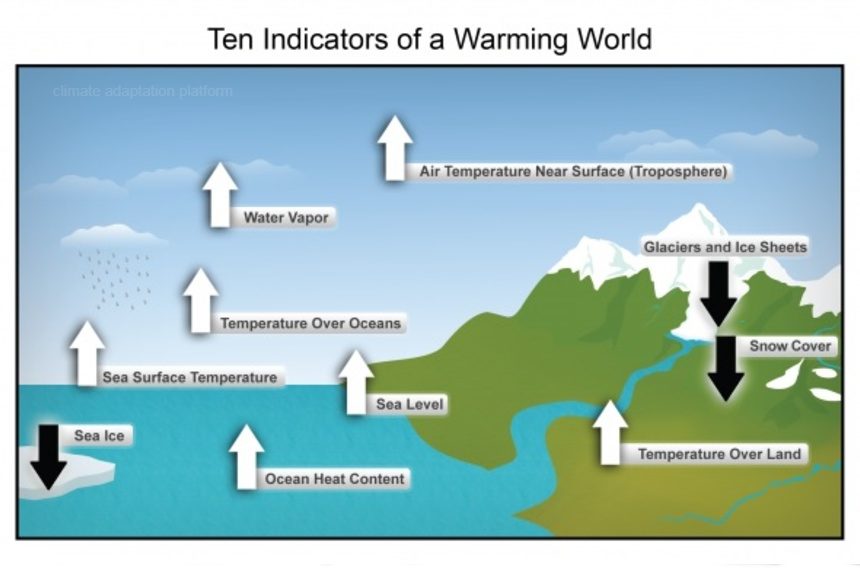Climate change has become a household name, a catchphrase if you like. You hear it on the news every day, see it on your screen, or on your mobile phones. There is no escaping it.
With every major calamity that happens, like hurricanes, extensive floods, and wildfires, even in volcanic eruptions, climate change is thrown into the mix.
You might have noticed that some of the younger generations are in the frontlines of the protests. Their most vocal and influential spokesperson is Greta Thunberg. They are advocating for their future. These young people are taking a stand on climate change because the impact will be felt in their generation.
You might say that the climate seems pretty normal. We get hot days, cold days, dry and wet season, and strong hurricanes occasionally. To think that these extreme events will not only happen soon but will increase in intensity and frequency causing great devastation on the planet like never seen before is quite absurd.
But what does the climate data and reports are saying or the experts and scientists have been warning us about climate change?
Should we not listen to them and get to the bottom of things?
To have a clear understanding of climate change and all the terms associated with it like global warming, carbon emissions, greenhouse gas, temperature rise and sea-level rise, these are the questions we need to ask:
What is global warming?
This means that the planet is getting hotter, caused by human activity.
It is true that the earth’s temperature has changed before, but the global warming we are on at the moment is a result of an increased in the average temperature of the earth’s climate since the late 19th century which is the start of the Industrial Revolution. The temperature has increased to 1 degree Celsius on average.
This temperature increase is recorded by the following scientific institutions: NASA, Met Office Hadley Centre, NOAA, and Japanese Meteorological Agency and their records go back to the late 19th century.
Global warming is synonymous with climate change.
Climate scientists have found that the cause of this warming, with overwhelming evidence, is human activity or how we put extra amounts of greenhouse gases (GHG) in the atmosphere by burning coal, natural gas, or oil for energy, also when we cut down forests that absorb carbon dioxide.
Greenhouse gases like carbon dioxide and methane trap heat in the earth’s surface and prevents it from escaping into space quickly. And we are adding more carbon and GHG in the atmosphere every day, warming the planet.
The United Nations has convened the Intergovernmental Panel on Climate Change (IPCC) “to provide governments with scientific information that they can use to develop climate policies (About the IPCC, n.d.).”
So far the IPCC has provided the most robust compilation of scientific data through the IPCC 5th assessment report, drawing from 800 plus expert authors. The report projects that the temperature will rise at least by 2 degree Celsius by 2100, and a possibility of even up to 4 degrees Celsius or more.
What do 2 degrees Celsius mean?
Although this figure is tiny scientists finds it unacceptably high. A small increase in temperature will increase the chances of deadly heatwaves, droughts, flooding, and extinction. It will also increase sea-levels as glaciers and sea-ice melt. Further increases in temperature will also affect the ability to grow food and the spread of diseases.
In 2018, the IPCC has published another report comparing the 2°C warming and 1.5°C warming. This half-degree difference in warming produces significant results according to researchers. Fewer temperature increases mean fewer people will move from coastal areas, less severe natural events, and lesser hit on the economy.
To limit temperature increase below 1.5 or 2 degrees Celsius is quite an impossible task.
Fossil fuels provide over 80% of the world’s energy requirement. And to reach zero emissions would mean to replace fossil fuels with low-carbon and renewable sources like solar, wind, and geothermal, nuclear, and carbon capture technology. Then electrify everything. After that, we still need to capture the remaining GHG directly from the air.
To target 1.5°C temperature rise means that we need to start cutting in half our current emission by 2030. This poses a huge technological and political challenge, and the global response is slow and actions to reduce emissions are weak.
How do we know global warming is real?
Because of temperature measurements and data from various agencies in the world, countries like the United States, Japan, and Europe have their independent historical data showing that the Earth’s average temperature has risen to 0.8 degree Celsius since the early 20th century.
Other evidence by scientists includes:
- the melting of glaciers and ice sheets around the world,
- satellite observation from 1970 showing warming in the lower atmosphere,
- more heat in the ocean causing sea-level rise,
- plants are flowering earlier in many parts of the world, and
- there’s more humidity in the atmosphere.
The National Oceanic and Atmospheric Administration (NOAA) summarises global warming by these ten Indicators shown on the image below:

How do we know that humans are causing global warming?
Climate Scientists are more than 95% sure that it is humans who are causing global warming since 1950 because of the following reasons:
- Greenhouse gases like CO2, methane, and water vapour absorbs infrared radiation and scatter them back to earth. So the presence of gases prevents the heat from escaping back to space, trapping radiation that warms the surface of the planet.
- GHG concentrations in the atmosphere have grown significantly since the Industrial Revolution, and this is directly linked directly to humans burning of fossil fuels.
- Satellite measurements also show that there is less infrared radiation escaping out into space but instead returns to the Earth’s surface. This a strong evidence that the GHG effect is increasing.
- Simple climate models back in the 1960s predict that global warming caused by carbon dioxide in the atmosphere would lead to a cooling of the upper atmosphere because heat will be trapped in the lower atmosphere. This was confirmed by satellite measurements later.
How has global warming affected the world?
Data from the IPCC shows that there have been higher temperatures experienced by every continent, and hot days are getting hotter.
As the world holds more moisture these creates heavier storms and floods. An example is the Hurricane Harveys record-setting rainfall.
Heatwaves are becoming longer and more frequent in the over the past 50 years particularly in Europe, Asia, and Australia.
Glaciers and ice sheets around the world since the 1970s are shrinking, particularly the ice sheets in Greenland. The Antarctic ice sheets are also slowly getting smaller.
Sea-level rise by 9.8 inches (25 centimetres) in the 19th and 20th centuries. The pace is speeding up due to thermal expansion that the warming of the oceans and melting of glaciers and ice sheets cause.
A hotter climate can benefit the crops in some high-latitude areas by lengthening the growing season and CO2 increases photosynthesis. But in other areas like California, and in tropical climates, it can damage the crops and reduces yield by up to 40% by 2050.
Warmer winters results to declines in snow accumulations in the United States which can increase flood, drought, and wildfire risk as water that would flow slowly over a season would come all at once.
Debatable Impacts
In order to present a balanced picture of climate change, scientists are still debating whether some events can be linked to climate change. For example, droughts have become more frequent and intense in the American Southwest, Mediterranean Europe, and West Africa but in the Midwestern United States and Northwestern Australia droughts have become less frequent. Although a recent study shows that globally, the time between droughts has shortened and areas affected by it takes longer to recover.
Another is that hurricanes in the North Atlantic Ocean have become more intense since 1970, however, this does not show a global trend particularly with tropical cyclones elsewhere in the world.
What are the future impacts of global warming?
Depending on the temperature increase. A higher increase of 4-degree Celsius will have a more dramatic effect than the 2-degree Celsius increase.
According to the IPCC if global warming continues it will create hotter temperatures, higher sea-levels (between 0.6 to 6.6 feet), more and severe heatwaves, drought and floods, stronger hurricanes, decline of crop yields especially in the tropics, or increase in some areas like the winter wheat in the United States, extinctions of many pants and animal species, and other long-term changes to the planet.
What do climate models say about warming that could happen in the coming decades?
The IPCC presents various scenarios of what could happen in the future depending on the concentrations of Greenhouse gas in the atmosphere. These scenarios are called Representative Concentration Pathways or RCP.
The first scenario is the RCP 2.6. This has the lowest GHG concentration as it assumes a decline in oil use, a population of 9 billion by 2100, increase energy efficiency, and emissions holding steady until 2020 and will decline and go negative by 2010. This is the most optimistic scenario of all. This will result in a temperature increase of below 2 degrees Celsius.
The next scenario is the RCP 4.5 which relies on ambitious emissions reductions but expects a decrease in emissions by 2040 and going steady until 2100. A global temperature rise of over 3 degrees Celsius is expected to happen in this scenario.
RCP 6 expects an emissions increase of up to 75% from current emissions, then peaks and declines by 2060 as the world still burns fossil fuels. This will increase global temperature by over 4 degrees Celsius.
RCP 8.5. shows the highest emissions and the most pessimistic scenario as it assumes a business-as-usual scenario. It expects a global population of 12 billion and three times the current rate of CO2 emissions by 2100 projecting a global temperature increase by over 6 degrees Celsius.
What do we do to stop global warming?
It would be a daunting task to keep temperature rise less than 2 degrees Celsius. This would mean that global emissions should drop at least 40 to 70% by 2050, and it should continue to drop by the end of 2100. After cutting back emissions by a lot, the next task is to remove carbon dioxide from the atmosphere.
Currently, 87% of our energy comes from fossil fuels, and only 13% is from low-carbon sources like wind, solar, hydroelectric, and some nuclear power plants. A reason we are not reducing emissions.
The IPCC recommends that to stay below 2 degrees, first, the world needs to increase is the use of clean energy by up to 3 to 4 times and continue to scale up. Second, we need to get more energy efficient at home, work, and use of cars, stop cutting the forest and reduce emissions from the agriculture and cement manufacturing industries. The longer we put off reducing emissions, the harder it gets and more severe the outcome will be.
What are we doing about climate change?
There is a serious gap between ambition and action. Big economy nations who have the biggest carbon emission should lead the way in CO2 reductions, while all the nations in the world should also do the same. The Paris agreement in 2015 that solicits the pledges and policies to cut down emissions from all nations is only voluntary and therefore does not require any accountability nor repercussions from any nations if not followed.
With our current policies, the world is on track to hit peak emissions by 2030 or later. And by this time, its effects on climate will be too late to undo.
Countries all over the world need to be more aggressive on their 2-degree goal. Sadly, Germany is giving up on their near-term targets, and many other others are lagging in their climate change commitments.
Rich countries who have already developed and built their wealth by using fossil fuels should help poor and developing countries trying to grow their economies, but now being are being deprived to use the same fuel.
However, it is not only through the Paris Agreement that climate policies and actions should be based on. There are several other actions that can be rigorously used to reduce emissions as seen on the table below:

The science is clear on climate change, and the solutions and technology are available to act on climate change.
Big economies and wealthy countries are usually the highest emitters and users of fossil fuels so their climate actions will have a great global impact and set an example for the rest of the world to follow. The climate crisis is upon us and we need to act now, mitigating and/or adapting to it.
To use the resources used in this blog post, please use these citations:
Plumer, B., Resnick, B., & Irfan, U. (2018, December 28). 9 questions about climate change you were too embarrassed to ask. Vox [Article]. Retrieved from https://www.vox.com/science-and-health/2017/6/1/15724164/9-questions-climate-change-too-embarrassed-to-ask
About the IPCC (n.d.). IPCC. Retrieved from https://www.ipcc.ch/about/



Leave a Reply